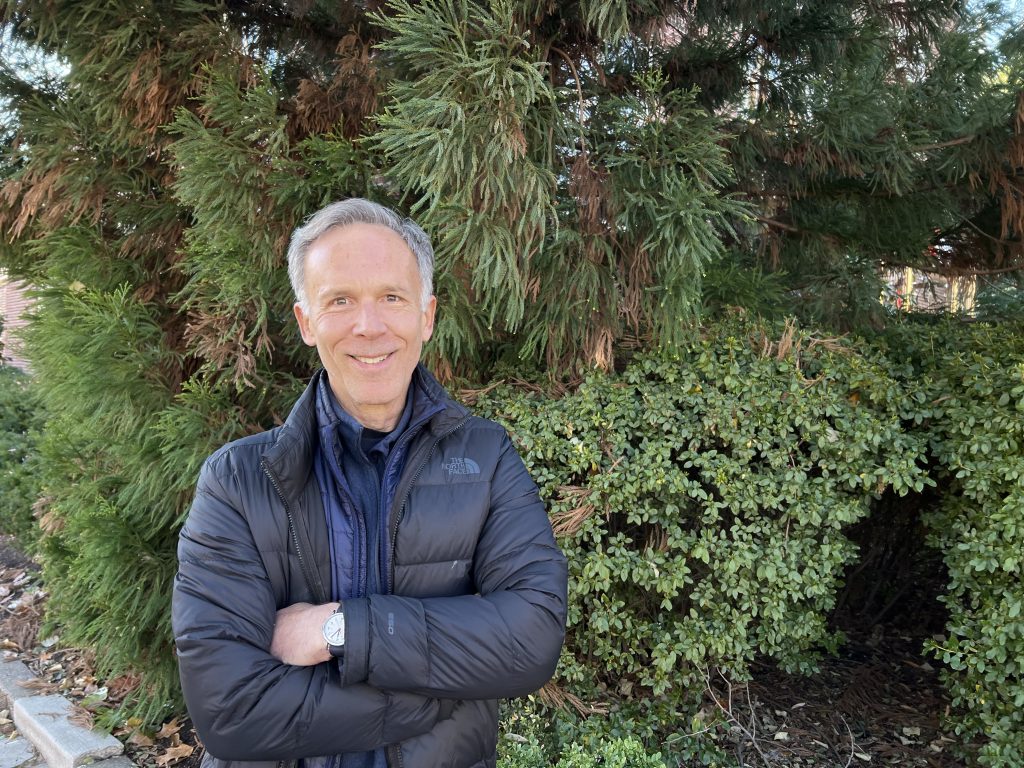
‘The Big Think’ with Andrew Johnson
A series of conversations with people who have worked in and for the watershed, sharing their expertise and knowledge
| February 6, 2023
Andrew Johnson was an environmental grant-maker at the William Penn Foundation from 2001-21 and oversaw its Watershed Protection Program for nearly a decade.
What observations do you have today about building and institutionalizing an effective, ongoing movement to protect and restore the Delaware River watershed?
At the risk of opening with a truism, it is worth emphasizing that protection and restoration of clean water in the Delaware River watershed is a massive, complex, expensive and long-term proposition.
Among other things, success on this front will require:
- Effective federal and state policy, informed by science.
- Widespread deployment and uptake of best practices for local on-the-ground implementation.
- Broad public support that is inclusive and racially diverse.
Fortunately, we have an exceptionally strong NGO community and effective public agencies across the watershed on the job. Among them, they focus on an array of important issues and activities, ranging from advocacy to forest protection, urban stormwater, sustainable agriculture, coalition building and environmental education.
While it is important for individual organizations and agencies to do their work in their own lanes — given the scale of what needs to be done to protect and restore clean water — it is essential to figure out ways to magnify their impact through coalition-building that enables a watershed-protection movement.
OK, so what are some examples?
There are multiple ways to strengthen the conservation NGO community, but I think three are particularly important and I think there is significant momentum in the watershed for each of these:
- Continue to use coalitions to enable collaboration: Institutionalized collaboration among local efforts across the watershed is a promising way to ensure that the whole is greater than the sum of the parts. We’re finishing a decade of experimenting with several models of collaboration, and no doubt there will be a lot of discussion about what has worked and what hasn’t.
Use what is learned as a foundation for building something even better. Ideally, the coalition-building and collaboration that has been occurring over the past decade or so has changed the culture, creating the opportunity for a full-fledged movement to be unleashed.
- Continue the hard work required to make the conservation movement in the watershed equitable and racially diverse: There are significant challenges that need to be addressed if we are to institutionalize an effective basin-wide movement, however. Primary among these is equitable participation of people of color in the conservation movement.
It also is necessary to continue and expand efforts to acknowledge and address inequities that historically have befallen communities of color, including by ensuring that those communities benefit directly from public and private investments in conservation. Also, the conservation table must be expanded, and new ideas about where and how to work to achieve long-term water quality goals must be pursued. There has been serious thinking and foundation-building on this front.
- Nurture Emerging Leaders: A challenge related to all of the above is generational change in leadership at public agencies and NGOs. How do we ensure that work-in-progress across the watershed to forge and institutionalize an equitable, effective and collaborative movement is sustained in the face of leadership and generational transition? It is critical that efforts to build the expertise and commitment of emerging leaders, particularly leaders of color, across the watershed are robust and institutionalized.
Is there something you’re particularly hopeful about?
The Clean Water Act and related policies have made many urban waterways in the Delaware River watershed living examples of how science-informed public policy can effectively protect and restore our environment. These rivers — including three that I’m most familiar with, the urban reaches of the Delaware, the Schuylkill and the Cooper — are now public assets, as opposed to liabilities.
Still, many miles of these and other recovering urban rivers — primarily flowing through poor communities and communities of color — continue to be inaccessible for recreation, education or enjoyment. As a result, they are not truly assets for those communities.
But access will come, eventually, and there is a risk that the inspirational success story of the Clean Water Act’s effect on urban rivers will foster speculative, unaffordable redevelopment that will drive lower-income people, and people of color, away from their communities and their rivers.
In our watershed, there are several excellent initiatives, including some in Philadelphia and Camden, that are making progress on efforts to equitably open up river access to benefit current residents via land- and water-trails, parks and on-water programs. I’m hopeful that these initiatives will succeed, and that similar efforts will take root in other parts of the watershed. This would be a remarkable way to honor and demonstrate the value of the Clean Water Act.
What makes you angry?
I am disturbed and disappointed by the continued lack of full funding of the Delaware River Basin Commission by all signatories of the compact. This undermines the commission’s core work and its ability to address emerging issues that affect water quality and supply. We are fortunate to have an effective public agency whose mission is focused entirely on the basin. Undoubtedly, there are tremendous opportunity costs associated with underfunding it.
Robust funding for DRBC — and for Delaware River watershed-focused federal and state agencies including the U.S. Fish and Wildlife Service, EPA, and the state DEPs and conservation agencies — is essential to build and sustain long-term, institutionalized watershed protection and restoration. Significant progress on securing major new public funding for some agencies and programs has been made in recent years, but advocacy for increased public funding for the Delaware River watershed should continue to be a priority for NGOs.






